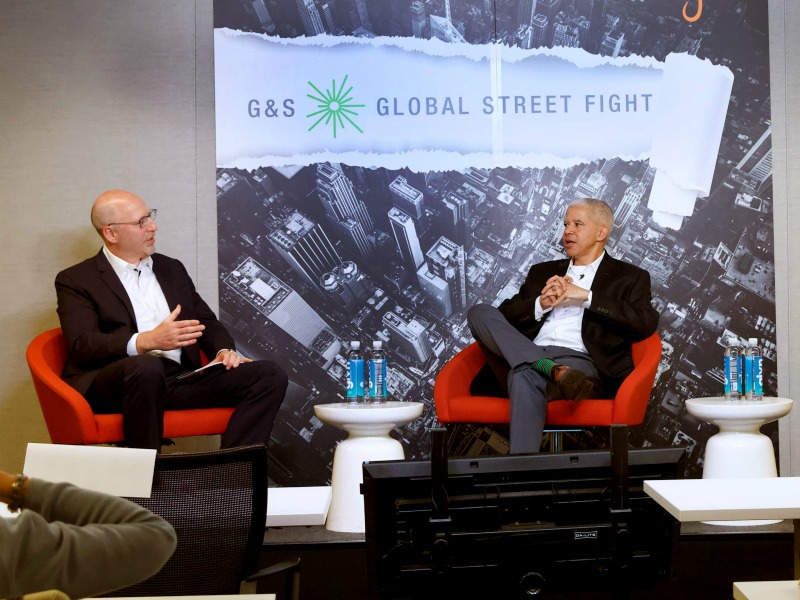Diana Marszalek 16 Jun 2018 // 1:20AM GMT

NEW YORK — President Trump’s war on the New York Times apparently has some upsides for the newspaper.
“We get regularly called out on a particular Twitter feed, and what’s really interesting about that is when we are called ‘failing’ and we are called ‘fake’ there is a direct relationship between that and rising subscriptions. It’s been charted out,” said national editor Marc Lacey. “We don’t mind that."
The problem, however, is that distrust of the media is taking shape in more perilous ways as well, Lacey said. The 40 or so reporters Lacey oversees are increasingly subject to “abuse from people around the country who blame them for the woes of the country," he said.
“It’s a challenging time,” he said.
Lacey’s comments were part of a far-reaching discussion on the news media and the challenges it faces at the Global Street Fight conference that G&S Business Communications held Wednesday in New York. Reaching new audiences, changing business models and mitigating bias were among the topics. So was the role brands play in the media ecosystem — most notably digital platforms.
Steven Oh, chief business officer of The Young Turks, or TYT (the “unapologetically progressive” OTT news channel), said he believes marketers and brands can reach millions of new young consumers by crafting their messages online in impactful ways, much like Bernie Sanders did in the 2016 presidential primary.
“There are less gatekeepers,” Oh said. “There’s a whole other world that’s emerging and it’s gaining steam.” TYT promotes brands doing that, he said, through partnerships with like-minded companies. The network and American Express, for example, partnered on producing a mini-documentary showing the perils of payday loans, followed by a banking workshop for individuals who would be susceptible to taking bad deals.
“Brands need to be unfiltered. Brands have an opportunity to try different things now,” he said. “When there were three networks it made sense to be as vanilla as possible. But now that doesn’t work because there are so many choices. You have to pull people in, especially millennials.”
Oh, however, did take exception to the growing willingness of brands to pull ads from platforms that publish offensive content, like Unilever threatened to do in February, when hate speech is a minuscule percentage of content being published — as is the likelihood of a brand showing up next to it. “It’s frustrating to see brands fleeing the entire ecosystem,” he said. “To give up on that platform because one ad might appear on one time … seems very short-sighted to me.”
The efforts also miss the mark because digital platforms are not the only mediums with unsavory content, he said.
“Most content in any news is 'brand unsafe.’ If you go to CNN … they are covering things that are unsafe all the time … plane crashes … disasters,” he said, adding that network crime shows and the like often are about taboo subjects as well. “In a closed system that’s been curated and vetted … that’s all OK.”
Meanwhile, the New York Times has dramatically reduced its dependence on the sponsors, so much so that it now considers itself operating on a subscription-based business model rather than an advertising one, Lacey said.
Doing that successfully, he said, requires producing the kind of content that engages readers across platforms, and bringing in new consumers through efforts like the organization's Race/Related initiative, which promotes reporting and discussion on issues surrounding race, and Overlooked, its project that involves writing obituaries of notable women who were excluded in the past.
"These initiatives bring in people who are otherwise not reading the New York TImes," he said.
Lacey, however, refuted critics who charge the Times uses its content to promote a liberal agenda, regardless of there being "no doubt our readers are on the liberal spectrum
"We do not edit the New York Times to satisfy or please the liberal audience," he said. "My goal is to challenge and provoke and prompt our liberal audience. I want them to learn something, and I want our journalism to be accessible and read across the political spectrum."


































.jpg)


















